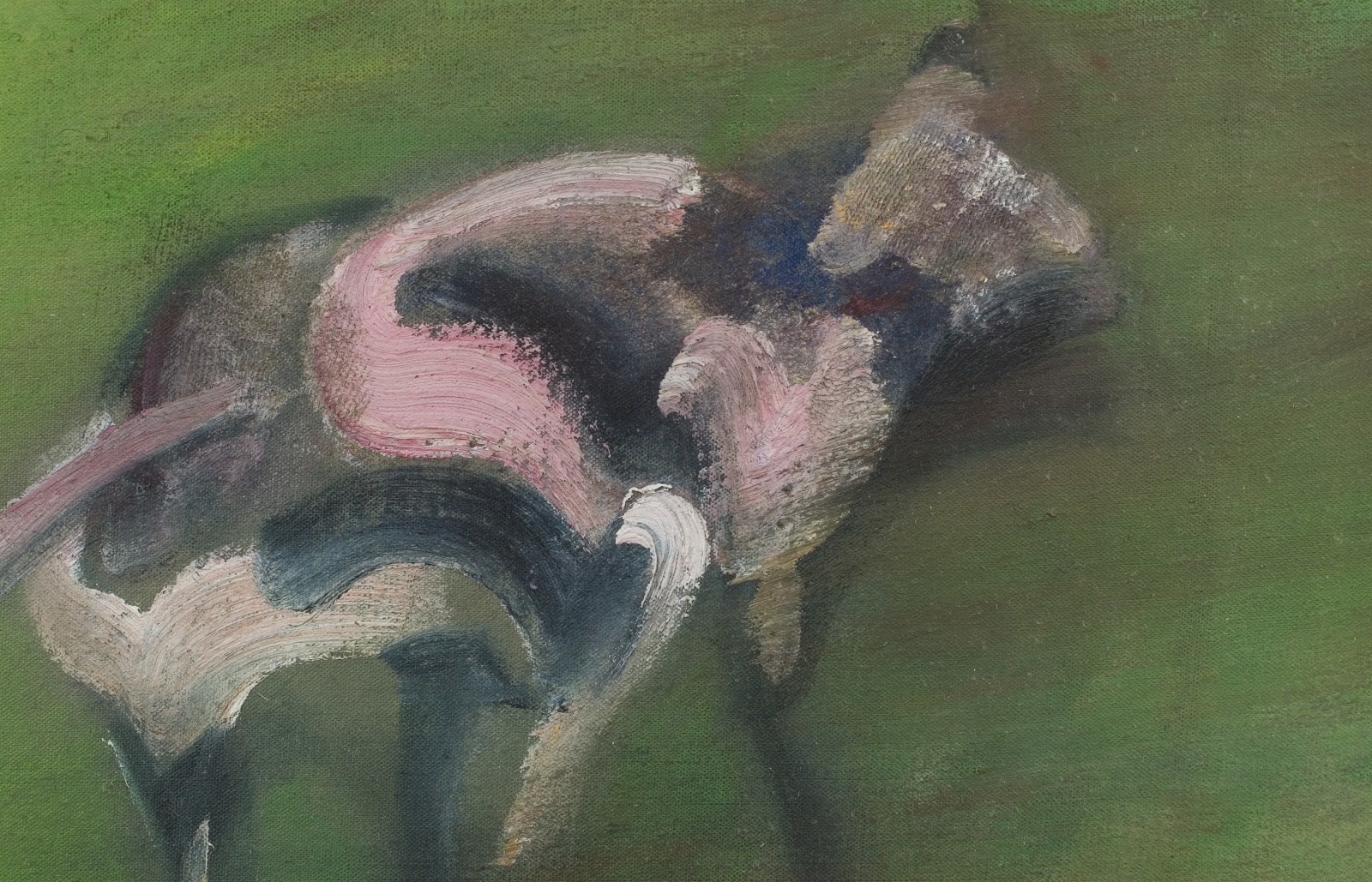In Francis Bacon’s outlook, humans were just another animal. From his pessimistic view of human nature there emerged a keen interest in non-human animals.
InSight No. 180
Francis Bacon, Dog, 1967
Francis Bacon (1909–1992) was a lifelong asthmatic. Having been thrust into a saddle for the fox hunt, a sport he detested, in childhood he also developed a horse allergy. These conditions were desperately unfortunate for one growing up in the twilight of Anglo-Irish society, which orbited the race track and for which there was no event more significant than the Dublin Show. In an obituary written for the New York Review of Books, his friend Caroline Blackwood recalled his remark that ‘surely there’s nothing worse than the dusty saddle lying in the hall.’ Yet the barriers that kept Bacon apart from animals did not preclude his enduring attraction towards them, and he perennially treated dogs, apes and other creatures as subjects in his work.
Bacon escaped from the dust and damp of his childhood in Ireland as quickly as possible. He was understandably attracted to warm climates, although he settled in London, and he made formative visits to the South of France and South Africa. His mother and two sisters singly but interrelatedly settled in South Africa, and Bacon stayed there in 1951 and 1952, and again in the late sixties when his mother’s health began to fail. Certain landscapes he made in the fifties have the aura of grassland and desert, while Elephant Fording a River illustrates the breadth of his interest in animals and their natural habitats. Such paintings were rooted in interests that Bacon established long before he visited Africa, and from an early stage he was drawn to the animals illustrated in books of photographs by Eadweard Muybridge and Marius Maxwell.
Also in the early fifties, using Muybridge’s photographs of animals in motion, Bacon made several large-format paintings of dogs. Examples are owned by Tate, the Albright-Knox Art Gallery in Buffalo and the National Gallery of Art in Washington, D.C. These meagre, wretched creatures often appear with their heads dropped low and their jaws hanging loose. A drain cover appears in two such paintings; the landscape inhabited by these pitiful creatures is construed as a vacant streetscape. In Bacon’s paintings, the imagery of dogs—much like that of sphinxes and apes—is troubled by a higher plane of psychological activity. These beings are invested with a consciousness akin to that which characterises Bacon’s frequently animalistic treatments of the human figure. In all cases it was the artist’s intention to represent beings unadorned by the conditioning of society, driven wholly by instinctual urges and a desperate will to survive.
The continuity between Bacon’s paintings of humans and animals, recently the subject of the Royal Academy exhibition Francis Bacon: Man and Beast (2022), curated by Michael Peppiatt, is demonstrated by a transitional middle stage. In a work called Monkey (1953), for instance, the subject is treated indistinguishably from those men in suits that Bacon painted around the same time. It uses the same head-and-shoulder format, a three-quarter-length view and a cage-like framework in the background. David Sylvester sat for Bacon and remarked afterwards that the artist ‘was always looking at photographs of wild animals’. In an interview with Sylvester in 1966, Bacon explained that ‘one image can be deeply suggestive in relation to another’. The implication was that animals and humans are sufficiently similar for each to inform a depiction of the other.
The imagery of Dog, a painting made in the late sixties, was taken from a contact negative made by the photographer Peter Beard. The art historian Rebecca Daniels first made the connection in an essay of 2009. The source image shows a trotting boxer, heading away from the camera, with a muskrat hanging from its mouth. Photography revealed the process of locomotion by which quadrupeds and other animals move, and by adopting the image of an animal arrested mid-step Bacon’s painting conveys a sense of movement passed and movement yet to come. The image is created from gestural and disconnected applications of paint, yet it is layered and contains the sense of a living, breathing, moving animal, as well as the sense of the photographic source object—blurred, tarnished, incomplete.
In Dog and other paintings of animals, Bacon made statements that emerged from the foundations of his practice: a pessimistic view of human nature; an interest in direct, uninhibited behaviours; the use of photographic source material; the painterly registration of source material which mediated between the painting and its subject. Describing Bacon’s frequent reference to photographs of ‘wild animals’ as he sat for a painting, David Sylvester remarked that he ‘never knew quite how to take that’. From all Bacon’s paintings, of animals and of the human animal, a similar mood of uncertainty prevails as the viewer becomes drawn into an altered world in which deep-rooted assumptions about humanity’s special place in the universe are stripped away.


